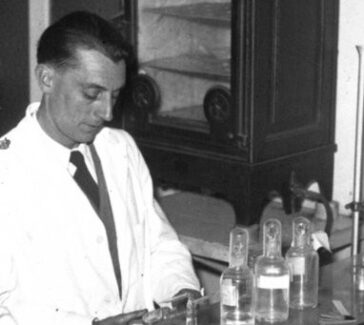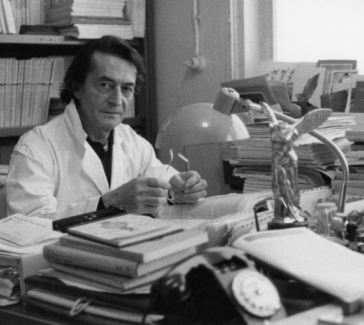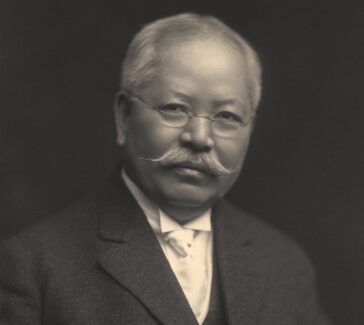Julius Lothar Meyer and Dmitri Ivanovich Mendeleev
Meyer and Mendeleev were contenders in the race to develop a periodic table of the elements.
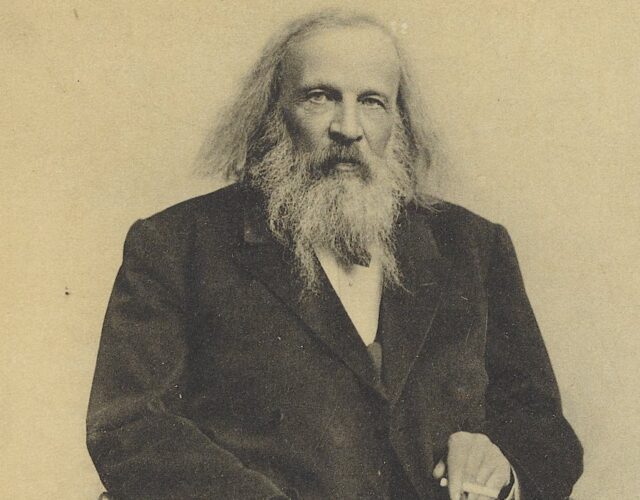
The periodic table is an iconic symbol of science. For both Meyer and Mendeleev, writing a textbook proved to be the impetus for developing the periodic table—a device to present the more than 60 elements known at the time in an intelligible fashion. Today’s instantly recognizable table includes well over 100 elements.
Julius Lothar Meyer (1830–1895) and Dmitri Ivanovich Mendeleev (1834–1907) worked at the University of Heidelberg only five years apart—both under the direction of Robert Bunsen—but they arrived there with significantly different backgrounds. Meyer was virtually born into a scientific career. He came from a medical family of Oldenburg, Germany, and first pursued a medical degree. In medical school he became interested in chemistry, especially physiological topics like gases in the blood.
Mendeleev was born in Tobolsk, Siberia, where his father taught Russian literature and his mother owned and operated a glassworks. His early contacts with political exiles gave him a lifelong love of liberal causes, and his freedom to roam the glassworks stimulated an interest in business and industrial chemistry. His mother—after her husband’s death and shortly before her own—took the 15-year-old Dmitri to St. Petersburg. There he attended the Main Pedagogical Institute and the University of St. Petersburg, where he pursued a doctorate in chemistry. During his graduate studies he traveled to Heidelberg to work with Bunsen.
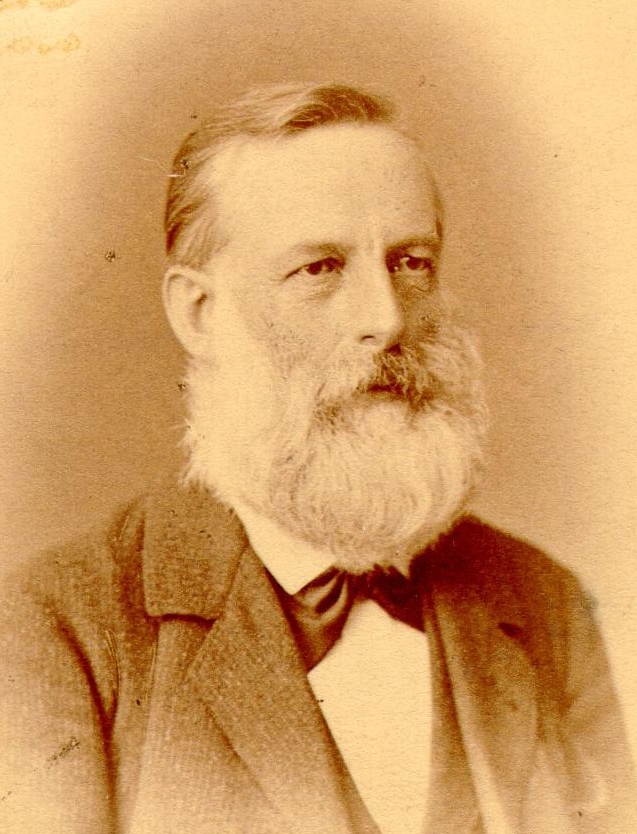
Karlsruhe and the Question of Atomic Weights
In 1860 Meyer and Mendeleev were among the young chemists attending the first ever international chemistry congress, the Karlsruhe Congress, and both were impressed with Stanislao Cannizzaro’s presentation of Amedeo Avogadro’s hypothesis and the light it shed on the question of atomic weights. For both, writing a textbook proved to be the impetus for developing the periodic table—that is, a device to present the more than 60 known elements in an intelligible fashion.
For some time chemists had been trying to devise a logical system of classification by arranging the elements by atomic weight, but confusion over how to determine atomic weights thwarted their attempts. Soon after Karlsruhe, various new atomic arrangements were published, eventually culminating in the independent works of Meyer and Mendeleev.
Who Got There First?
In the first edition of his textbook Die modernen Theorien der Chemie (1864), Meyer used atomic weights to arrange 28 elements into 6 families that bore similar chemical and physical characteristics, leaving a blank for an as-yet-undiscovered element. His one conceptual advance over his immediate predecessors was seeing valence, the number that represents the combining power of an atom of a particular element, as the link among members of each family of elements and as the pattern for the order in which the families were themselves organized. In his original scheme the valences of the succeeding families, beginning with the carbon group, were 4, 3, 2, 1, 1, and 2.
After returning to St. Petersburg from the Karlsruhe Congress, Mendeleev taught at the St. Petersburg Technological Institute, completed his doctoral dissertation, started an experimental farm, and lectured for the Free Economic Society on agricultural topics. When in 1867 he was appointed to the chair of chemistry at the University of St. Petersburg, he too began to write a textbook, Osnovy khimii (Principles of Chemistry; first edition, 1871), and worked out the “periodic law,” which was first published in papers in 1869. Mendeleev succeeded in arranging all known elements into one table.
Meyer then published his classic paper of 1870 (“Die Natur der chemischen Elemente als Function ihrer Atomgewichte,” Justus Liebigs Annalen der Chemie, supp. 7 [1870], 354–364), describing the evolution of his work since 1864. This paper is particularly famous for its graphic display of the periodicity of atomic volume plotted against atomic weight. Many chemists, including Bunsen, had their doubts about the periodic law at first, but these doubters were gradually converted by the independent discovery of elements that fit into the blanks in the tabular arrangement and the correction of old atomic weights that the table cast in doubt. Meanwhile, Meyer and Mendeleev carried on a long, drawn-out priority dispute.
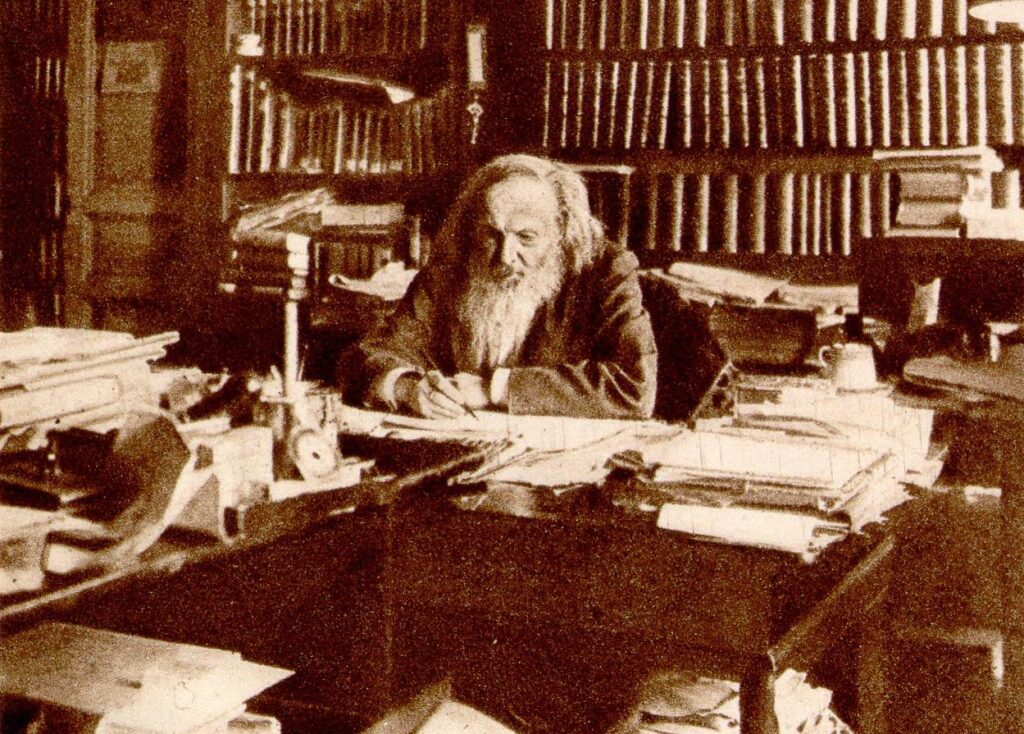
Later Lives
Whereas Meyer continued to pursue a life of research and teaching and spent the last 20 years of his life as a professor at Tübingen, Mendeleev’s strong democratic leanings got him into trouble with political and academic authorities, although his scientific eminence and the usefulness of his advice protected him to a certain degree.
But in 1890 he left his professorship at the University of St. Petersburg after an official rebuke for delivering a student protest to the ministry of education. He then rose in government service to the position of director of the Central Board of Weights and Measures. He contributed to the modernization of Russia through his reports and recommendations on weights and measures, protective tariffs, shipbuilding and shipping routes in Arctic regions, the manufacture of smokeless powder, and the development of heavy industry. When he died, students carried the periodic table in the funeral procession.
Featured image: Portrait of Dmitri Mendeleev, ca. 1900.
Science History Institute

